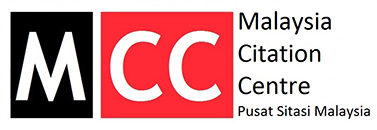Effect of Cooling Rate on the Microstructures And Hardness Of Fe-Ni-Cr Superalloy
Abstract
Fe-Ni-Cr superalloy is a heat resistant material that shows good mechanical strength and resistance to oxidation and corrosion at high temperature. Heat treatment was conducted on Fe-Ni-Cr superalloy to observe its effect on the microstructures and mechanical property namely hardness. Solution treatment were carried out at 900oC, 975oC, 1050oC, and 1125oC followed by two cooling methods i.e quenching and air cool. The samples were analyzed by using materials characterization techniques such as SEM, XRD, and optical microscope. The Fe-Ni-Cr superalloy formed mainly dendritic austenitic structure with Cr23C6 precipitated along the grain boundaries. Increase in solution treatment temperature results in dissolution of chromium carbide, coarser grain, and lower hardness. Different cooling rate after solution treatment shows that fast cooling produces fewer and finer chromium carbide (Cr23C6) precipitates, finer grain, and higher hardness as compared with slow cooling rate. Highest hardness value which is 213.5 Hv was recorded on sample solution treated at 900oC followed by water quenched.
Downloads
Downloads
Published
How to Cite
Issue
Section
License
JMET Copyright Principles
JMET seeks to retain copyright of the articles it publishes, without the authors giving up their right to use their own material.
Originality
The manuscript is neither been published before, nor is it under consideration for publication in any other journals. It contains no matter that is scandalous, obscene, libelous or otherwise contrary to law.
Terms of Acceptance
When the article is accepted for publication, the authors shall hereby agree to transfer to the Journal of Mechanical Engineering and Technology, all rights, including those pertaining to electronic forms and transmissions, under existing copyright laws, except for the following, which the author(s) specifically retain(s):
All proprietary right other than copyright, such as patent rights.
- The right to make further copies of all or part of the published article for my/our use in classroom teaching.
- The right to reuse all or part of this material in a compilation of my/our own works or in a textbook of which I/we am/are the author(s).
- The right to make copies of the published work for internal distribution within the institution that employs me/us.
The authors agree that copies made under these circumstances will continue to carry the copyright notice that appeared in the original published work. The authors agree to inform any co-authors, if any, of the above terms. The authors certify that they have obtained written permission for the use of text, tables, and/or illustrations from any copyrighted source(s), and they agree to supply such written permission(s) to Journal of Mechanical Engineering and Technology upon request.





